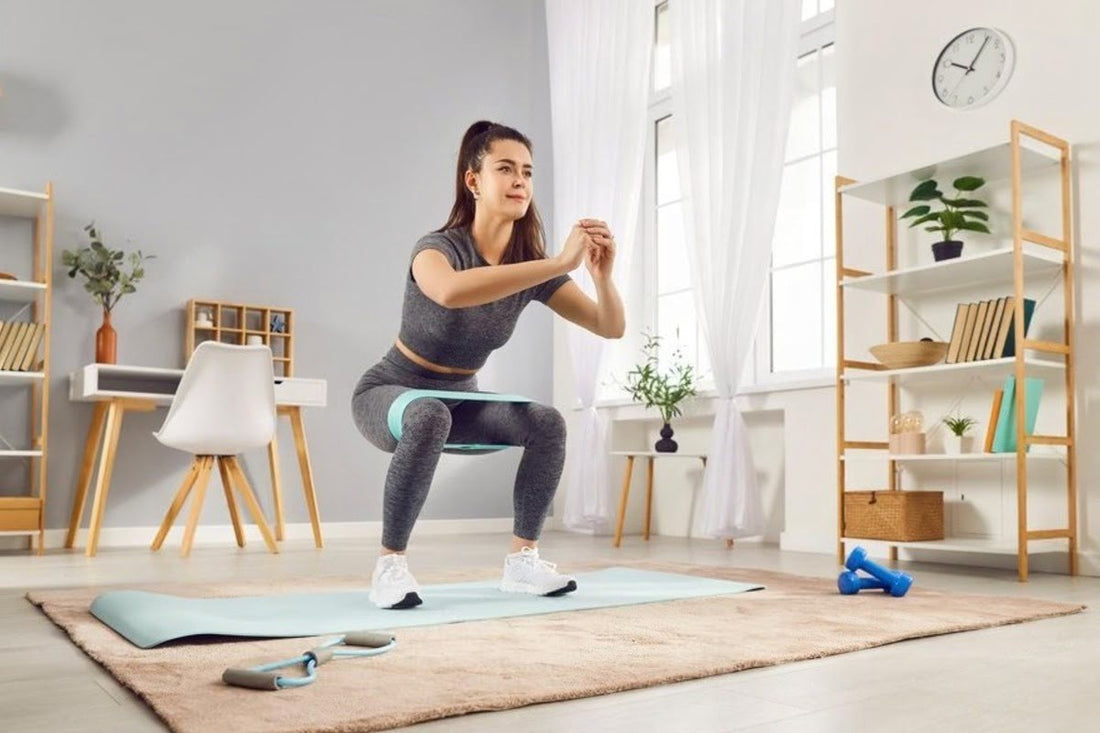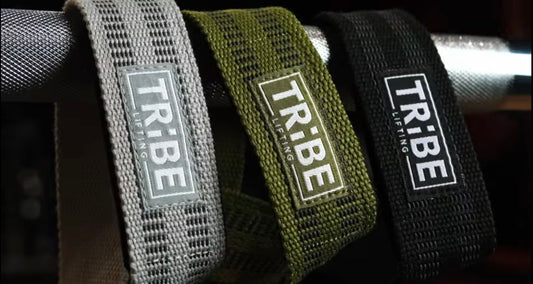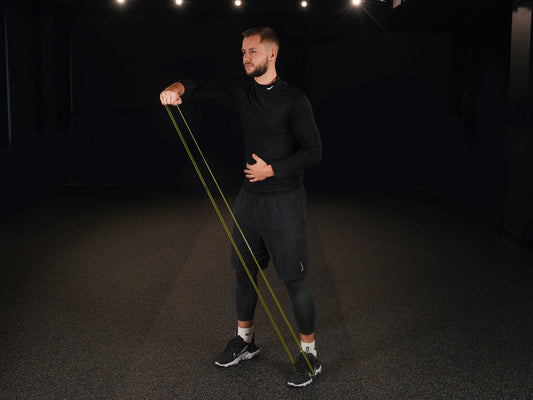Building strong, toned legs doesn't require expensive gym equipment or heavy weights. Leg exercises with resistance bands offer an incredibly effective and versatile solution for targeting every muscle in your lower body. These portable tools provide continuous tension throughout your entire range of motion, creating unique muscle-building benefits that traditional weights simply cannot match.
Whether you're a fitness beginner looking to start your strength journey or an experienced athlete seeking to add variety to your routine, leg exercises with resistance bands deliver exceptional results. The beauty of band training lies in its accessibility – you can perform these exercises anywhere, from your living room to a hotel room while traveling.
Resistance bands challenge your muscles in ways that feel different from free weights. The elastic tension increases as you stretch the band, providing maximum resistance at the peak of each movement. This unique resistance curve helps improve muscle activation and can lead to better strength gains over time.
Why Resistance Bands Are Perfect for Leg Training
Resistance bands excel at targeting the lower body because they allow for natural movement patterns while providing consistent tension. Your leg muscles work harder to stabilize against the elastic resistance, engaging smaller stabilizing muscles that might be overlooked with traditional equipment.
The variable resistance of bands means your muscles face increasing challenge as they move through each exercise. This progressive tension perfectly matches your muscle's strength curve, where you're typically stronger in certain positions and weaker in others. Bands automatically adjust to provide appropriate resistance throughout the entire movement.
Joint-friendly training represents another major advantage of resistance bands. The elastic nature provides smooth, controlled resistance that's gentler on your knees, hips, and ankles. This makes leg exercises with resistance bands ideal for people recovering from injuries or those who experience joint discomfort with heavy weights.
Bands also activate your core muscles more than many traditional leg exercises. The unstable nature of elastic resistance forces your abdominal and back muscles to work harder to maintain proper form and balance. This means you're building functional strength that translates to better performance in daily activities.
The convenience factor cannot be overstated. A set of resistance bands weighs less than a pair of sneakers yet provides resistance equivalent to hundreds of pounds of weights. You can pack them in any bag and maintain your fitness routine regardless of location or circumstances.
Top 7 Leg Exercises with Resistance Bands
Squats with Resistance Bands
Squats form the foundation of any effective leg workout, and adding resistance bands transforms this classic movement into a powerhouse exercise. Place the band under both feet and hold the handles at shoulder height, or loop a mini band around your thighs just above the knees.
The band adds external resistance that challenges your quadriceps, glutes, and core throughout the entire squat motion. As you descend, the band creates tension that your muscles must control, while the ascent requires explosive power against increasing resistance.
For proper form, keep your feet shoulder-width apart and maintain a straight back throughout the movement. Drive through your heels and keep your knees tracking over your toes. The band should maintain consistent tension – avoid letting it go slack at any point during the exercise.
Band squats offer incredible versatility. You can perform them as bodyweight movements, add pulses at the bottom, or incorporate jump squats for explosive power training. Each variation targets your leg muscles slightly differently while maintaining the core benefits of the squat pattern.
Glute Bridges and Hip Thrusts
Glute bridges with resistance bands specifically target your posterior chain – the muscles along the back of your body that are crucial for strength, posture, and injury prevention. Loop a mini band around your thighs or use a longer band anchored under your back.
Lie on your back with knees bent and feet flat on the floor. The resistance band should create tension even in the starting position. Drive through your heels and squeeze your glutes to lift your hips toward the ceiling, fighting against the band's resistance.
This exercise dramatically improves glute activation while strengthening your hamstrings and core. The band forces your glutes to work harder to maintain proper hip alignment, preventing your knees from caving inward during the movement.
Hip thrusts represent the advanced version of this exercise. Position your upper back against a couch or chair and perform the same movement pattern with greater range of motion. The elevated position allows for deeper hip flexion and more intense glute activation.
Lunges (Forward & Reverse Variations)
Lunges with resistance bands challenge your balance, coordination, and unilateral leg strength. Step on one end of the band and hold the other end in your hands, or loop a mini band around your ankles for lateral resistance.
Forward lunges with bands require you to step forward against resistance, then return to starting position while controlling the elastic tension. This movement pattern strengthens your quadriceps, glutes, and calves while improving hip mobility and stability.
Reverse lunges offer a slightly different challenge by requiring you to step backward against the band's pull. This variation tends to be easier on the knees while providing intense activation of the glutes and hamstrings.
The key to successful band lunges lies in maintaining control throughout both the stepping and returning phases. Don't let the band snap you back to starting position – use your muscles to control the movement and maximize the strength-building benefits.
Glute Kickbacks
Glute kickbacks with resistance bands provide targeted activation of your gluteus maximus and hamstrings. Loop a mini band around your ankles or secure a longer band to a sturdy anchor point and around your working leg.
Start in a standing position with hands on your hips or holding onto a wall for balance. Keeping your working leg straight, kick it directly behind you against the band's resistance. This movement is a staple among leg exercises with resistance bands , focusing on isolating and strengthening the glutes. Focus on squeezing your glute at the top of the movement before slowly returning to the starting position.
The constant tension from the resistance band ensures your glutes remain active throughout the entire range of motion. This continuous muscle activation leads to improved strength and muscle tone in your posterior chain.
Variations include performing kickbacks from a hands-and-knees position, which provides additional core stability challenges, or adding pulses at the top of each repetition for increased intensity.
Side Steps / Lateral Band Walks
Lateral band walks are one of the most effective leg exercises with resistance bands , targeting muscles that are often neglected in traditional forward-and-backward movements. Place a mini band around your ankles or just above your knees, depending on your strength level and desired intensity.
Assume a partial squat position with your feet hip-width apart. Step sideways with one foot, maintaining tension in the band, then bring the other foot to meet it. Continue stepping in one direction for the desired number of repetitions before switching directions.
This exercise strengthens your gluteus medius and minimus, muscles crucial for hip stability and knee health. These smaller glute muscles help prevent knee cave-in during squats and lunges while improving overall lower body function.
Keep your chest up and avoid bouncing during the movement. The band should maintain constant tension – never let it go slack between steps. Focus on quality over speed to maximize the strengthening benefits.
Standing Leg Abductions
Standing leg abductions with resistance bands target your outer thighs and hip stabilizers. Loop a mini band around your ankles and stand with feet hip-width apart, hands on your hips for balance.
Keeping your standing leg slightly bent, lift your working leg directly out to the side against the band's resistance. This movement is a highly effective part of leg exercises with resistance bands, targeting the gluteus medius for strength and stability. Hold briefly at the top before slowly lowering back to starting position. Complete all repetitions on one side before switching legs.
This exercise addresses muscle imbalances and strengthens the often-weakened gluteus medius. Strong hip abductors improve your performance in sports and daily activities while reducing injury risk.
Focus on lifting your leg from the hip rather than tilting your entire body sideways. Keep your core engaged and maintain good posture throughout the exercise to maximize effectiveness and prevent compensation patterns.
Fire Hydrants
Fire hydrants with resistance bands provide an excellent way to target your glutes from a different angle while improving hip mobility and stability. Place a mini band around your thighs just above the knees and assume a hands-and-knees position.
Keeping your knee bent at 90 degrees, lift one leg out to the side until your thigh is parallel to the floor. Focus on initiating the movement from your hip, not your knee, and squeeze your glute muscle at the top of the movement.
This exercise targets your gluteus medius and maximus while also engaging your core muscles for stability. The resistance band adds constant tension throughout the movement, increasing muscle activation and making the exercise more challenging.
Maintain a neutral spine throughout the exercise and avoid rotating your torso. The movement should come entirely from your hip joint, with your core muscles working to keep your body stable and aligned.
How to Structure Your Leg Workouts
Beginner-Friendly Routine (10–15 min)
New to leg exercises with resistance bands ? Start with this simple routine that introduces basic movement patterns while building foundational strength. Perform each exercise for 12-15 repetitions with 30 seconds rest between exercises.
Begin with band squats to warm up your entire lower body, followed by glute bridges to activate your posterior chain. Add forward lunges to challenge your balance and unilateral strength, then finish with lateral band walks to target your hip stabilizers.
Focus on learning proper form rather than speed or intensity. Take extra rest if needed and don't hesitate to use lighter resistance until you master each movement pattern. Consistency matters more than perfection in these early stages.
Complete this routine 2-3 times per week with at least one day of rest between sessions. Your muscles need time to recover and adapt to the new stimulus of resistance band training.
Intermediate Routine (20 min)
Ready to increase the challenge? This intermediate routine incorporates all seven exercises with increased volume and intensity. Perform 2 sets of each exercise with 15-20 repetitions per set.
Start with band squats and progress through glute bridges, alternating forward and reverse lunges, glute kickbacks, lateral band walks, standing leg abductions, and hamstring curls. Rest 30-45 seconds between sets and 60 seconds between different exercises.
Add variations to increase difficulty: try jump squats with bands, single-leg glute bridges, or walking lunges. These progressions challenge your muscles in new ways while building explosive power and stability, enhancing the effectiveness of your leg exercises with resistance bands routine.
Monitor your form carefully as fatigue sets in. It's better to reduce repetitions than compromise technique, which could lead to injury or reduced effectiveness.

Advanced Routine (30 min)
Advanced practitioners can handle higher volume and more challenging variations. Perform 3 sets of each exercise with 20-25 repetitions, incorporating advanced techniques like supersets and drop sets.
Superset squats with glute bridges, lunges with glute kickbacks, and lateral walks with leg abductions — all essential leg exercises with resistance bands. This approach maximizes your time while creating intense muscle fatigue and growth stimulus.
Add plyometric elements like jump squats, jump lunges, and explosive kickbacks to develop power and athleticism. These high-intensity variations require excellent form and should only be attempted once you've mastered the basic movements.
Include single-limb variations and longer time under tension techniques like slow negatives and pause reps. These advanced methods challenge your muscles in unique ways that promote continued progress.
Conclusion
Leg exercises with resistance bands offer an unmatched combination of convenience, effectiveness, and versatility for building lower body strength and tone. These seven fundamental exercises target every major muscle group in your legs while providing the flexibility to train anywhere, anytime. The progressive nature of resistance band training means you'll continue seeing results as you advance from beginner to intermediate and beyond. The variable resistance challenges your muscles throughout their full range of motion, leading to balanced strength development and reduced injury risk.










